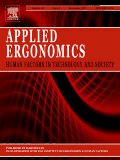
APPLIED ERGONOMICS
Scope & Guideline
Transforming Workspaces Through Innovative Ergonomic Solutions
Introduction
Aims and Scopes
- Human-Computer Interaction (HCI):
Research in this area focuses on optimizing the interaction between humans and computer systems, including usability studies, interface design, and the use of technology in various settings. - Workplace Ergonomics:
The journal covers studies aimed at improving ergonomic practices in workplaces, including assessments of physical workloads, design modifications for equipment, and interventions aimed at reducing work-related musculoskeletal disorders. - Safety in High-Risk Environments:
This scope includes research on safety practices in industries such as healthcare, aviation, and military operations, focusing on human factors that contribute to safety and risk mitigation. - Assistive Technologies and Exoskeletons:
The journal highlights advancements in assistive technologies, including the design and evaluation of exoskeletons and other devices aimed at reducing physical strain and enhancing worker performance. - Cognitive Ergonomics:
Research in cognitive ergonomics examines how cognitive processes affect human performance in various tasks, including workload management, decision-making in automated systems, and the impact of distractions. - Field Studies and Real-World Applications:
Applied Ergonomics emphasizes the importance of field studies that explore the practical implications of ergonomic research, focusing on real-world applications and evidence-based interventions.
Trending and Emerging
- Integration of Artificial Intelligence (AI) in Ergonomics:
There is a growing focus on how AI can be integrated into ergonomic practices, including the design of smart systems that adapt to user needs and enhance safety and efficiency. - Remote Work Ergonomics:
The COVID-19 pandemic has accelerated research into ergonomics for remote work environments, leading to studies on effective home office setups, work-life balance, and the impact of remote work on physical and mental health. - Wearable Technology and Biometric Monitoring:
The use of wearable devices for monitoring physical stress and fatigue in real-time is gaining traction, with research focusing on how these technologies can enhance workplace ergonomics and safety. - Human-Robot Collaboration:
Research on the dynamics of human-robot collaboration is on the rise, exploring how robots can assist in tasks while ensuring worker safety and efficiency. - Sustainability in Ergonomics:
Emerging themes highlight the importance of sustainable practices within ergonomics, addressing how ergonomic design can contribute to environmental sustainability and resource efficiency. - Mental Health and Wellbeing in the Workplace:
The intersection of ergonomics with mental health is increasingly recognized, with studies focusing on how ergonomic practices can support psychological wellbeing and reduce stress in various work settings.
Declining or Waning
- Traditional Manual Material Handling:
Research focusing solely on traditional manual material handling techniques has decreased, as the field shifts towards more integrated approaches that include technology, automation, and ergonomics in design. - Static Postural Studies:
Studies that primarily examine static postures without considering dynamic movements or task variations are becoming less common, as researchers recognize the importance of understanding posture in context. - Generalized Ergonomic Assessments:
There has been a noticeable decline in research that applies generalized ergonomic assessment tools without customization for specific tasks or populations, as more tailored approaches are favored. - Single-Factor Analysis:
Research that examines only one factor affecting ergonomics, such as only physical workload or only cognitive load, is waning in favor of multi-faceted analyses that consider the interplay of various factors. - Psychosocial Factors in Isolation:
While psychosocial factors are still relevant, studies that treat them in isolation from physical ergonomic factors are becoming less prevalent, emphasizing the need for a holistic approach to ergonomics.
Similar Journals

ERGONOMICS
Elevating standards in human-centered design.ERGONOMICS is a premier journal that serves the dynamic fields of Human Factors and Ergonomics, as well as Physical Therapy, Sports Therapy, and Rehabilitation. Published by Taylor & Francis Ltd in the United Kingdom, this journal not only boasts a commendable impact factor but also holds a Q2 quartile ranking across its categories, underscoring its influence and academic rigor. With a convergence of significant research dating back to 1957, ERGONOMICS provides a multifaceted platform for the dissemination and discussion of innovative findings that enhance the interaction between people and their environments. Although the journal does not offer Open Access options, it remains a vital resource for researchers, professionals, and students seeking to deepen their understanding of ergonomic principles and applications. Positioned at the intersection of health and human behavior, ERGONOMICS is dedicated to advancing knowledge and promoting best practices in an era where the demand for safe and efficient work environments continues to grow.

International Shipbuilding Progress
Fostering excellence in mechanical and ocean engineering.International Shipbuilding Progress is a distinguished journal dedicated to advancing knowledge in the fields of Mechanical and Ocean Engineering, published by IOS PRESS. With a rich history dating back to 1969 and over four decades of scholarly contributions, this journal serves as a vital platform for researchers, professionals, and students seeking to explore innovative technologies and advancements within the shipbuilding sector. Although it currently does not offer open access options, the journal is held in high regard, reflected by its Q3 ranking in both the Mechanical Engineering and Ocean Engineering categories according to the latest 2023 category quartiles. The journal aims to disseminate high-quality research findings and foster collaboration among experts globally, enhancing the maritime and shipbuilding industries. For those engaged in maritime innovation and engineering, International Shipbuilding Progress is an essential resource for staying abreast of the latest developments and research trends.
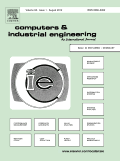
Computers & Industrial Engineering
Navigating the Future of Technology in Industrial ApplicationsComputers & Industrial Engineering, published by PERGAMON-ELSEVIER SCIENCE LTD, is a premier journal dedicated to advancing the fields of computer science and industrial engineering. Since its inception in 1976, this journal has become a vital resource for researchers and professionals, with a remarkable impact factor and distinguished Q1 quartile rankings in both the Computer Science and Engineering categories, reflecting its significant influence and respect within the academic community. Featuring a comprehensive scope that encompasses innovative computational methods, system optimization, and industrial applications, it serves as a platform for high-quality research that explores the interplay between technology and industrial processes. Although it does not currently offer open access, the journal's robust indexing in Scopus—ranked #12 in General Engineering and #15 in General Computer Science—underscores its commitment to disseminating cutting-edge knowledge and fostering collaboration among scholars, practitioners, and students globally. With its convergence spanning until 2024, Computers & Industrial Engineering is positioned at the forefront of emerging trends, making it an essential reference point for anyone dedicated to the evolution of technology in industry.

MM Science Journal
Driving Knowledge Forward in Engineering Disciplines.MM Science Journal is a leading publication in the fields of Automotive Engineering, Electrical and Electronic Engineering, Industrial and Manufacturing Engineering, and Mechanical Engineering, published by MM SCIENCE. Established in 2014 and spanning a converged period to 2024, this journal serves as a crucial platform for disseminating innovative research and practical applications relevant to industry professionals and academic scholars alike. With a notable Q3 ranking in multiple engineering categories and Scopus Ranks placing it in the 35th to 25th percentiles across various disciplines, MM Science Journal is committed to advancing knowledge and fostering collaboration in engineering disciplines. Although not currently an open-access publication, the journal remains instrumental for those seeking to engage with cutting-edge developments in engineering from its base in the Czech Republic. Researchers, students, and professionals are encouraged to explore the rich findings shared within its pages, contributing to the ongoing evolution of engineering practices.
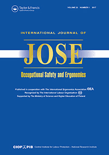
International Journal of Occupational Safety and Ergonomics
Elevating occupational health standards worldwide.International Journal of Occupational Safety and Ergonomics, ISSN 1080-3548, is a leading multidisciplinary journal published by TAYLOR & FRANCIS LTD with a dedicated focus on advancing research and practices in occupational safety and ergonomics. Since its inception in 1995, this journal has provided a platform for the dissemination of innovative studies that address critical issues in public health, environmental and occupational health, and safety research. Recognized for its rigorous peer-review process, the journal holds a respectable position in the Q2 quartile rankings across multiple categories as of 2023, reflecting its impact and relevance within the academic community. It ranks 24th out of 109 in Safety Research, 198th out of 665 in Public Health, and 66th out of 207 in Safety, Risk, Reliability and Quality, showcasing its influence in these essential fields. The journal's broad scope aims to bridge gaps between research and application, ensuring that findings contribute to effective safety practices in various industries. While not an Open Access journal, the International Journal of Occupational Safety and Ergonomics remains an invaluable resource for researchers, professionals, and students seeking to stay informed about the evolving landscape of occupational safety. Its headquarters are located in Abingdon, England, serving as a conduit for scholarly communication in this vital area of study.
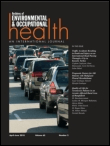
Archives of Environmental & Occupational Health
Transforming research into actionable insights for a safer world.Archives of Environmental & Occupational Health is a prestigious journal published by Routledge Journals, Taylor & Francis Ltd, dedicated to advancing research and knowledge in the realms of environmental science, occupational health, and toxicology. With an ISSN of 1933-8244 and an E-ISSN of 2154-4700, this peer-reviewed journal has gained significant recognition, currently holding a Q2 ranking in Environmental Science and Q3 rankings in Health, Toxicology and Mutagenesis, and Public Health. Established in 2005, it serves as a vital platform for researchers, practitioners, and policymakers alike who aim to address and disseminate findings on pressing environmental and occupational health issues. The journal is not open access, allowing for rigorous peer review processes while still reaching a broad readership. As it converges through 2024, the Archives of Environmental & Occupational Health continues to play a critical role in shaping discourse and fostering innovation in the field, making it an essential resource for those committed to improving both human health and the environment.

Indian Journal of Occupational and Environmental Medicine
Elevating Standards in Occupational and Environmental MedicineIndian Journal of Occupational and Environmental Medicine, published by Wolters Kluwer Medknow Publications, is a pivotal resource in the field of public health, focusing on the critical intersections of occupational safety and environmental health. With the ISSN 0973-2284 and E-ISSN 1998-3670, this journal has been a beacon of knowledge since its inception in 1999 and continues to influence scholarly discourse through its convergence years culminating in 2024. Recognized for its contribution to the field with a 2023 Scopus categorization of Q3 in Public Health, Environmental and Occupational Health, it has secured its place among the top journals, ranked #453 out of 665 within its specialty, reflecting a respectable 31st percentile. While it operates on a subscription basis, the journal ensures comprehensive coverage of significant research, thereby enhancing occupational health practices and environmental health policies. It serves as a vital platform for researchers, professionals, and students dedicated to advancing knowledge and improving outcomes in these crucial areas of health. The journal's commitment to excellence is evident as it continues to cater to a diverse readership from its base in Mumbai, India.
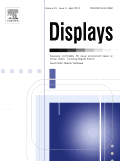
DISPLAYS
Shaping Tomorrow's Digital InteractionsDISPLAYS is a prestigious journal published by Elsevier that focuses on the dynamic intersection of Electrical and Electronic Engineering, Hardware and Architecture, and Human-Computer Interaction. Since its inception in 1979, the journal has made significant contributions to advancing the field, currently holding a notable impact factor and ranking within the Q2 category across multiple disciplines, including Electrical and Electronic Engineering, Hardware and Architecture, and Human-Computer Interaction. With its broad scope, DISPLAYS is dedicated to publishing high-quality research that inspires innovation in display technology and its applications. Researchers and professionals benefit from access to cutting-edge findings in the realm of display systems, which are integral to the evolving landscape of digital interaction. Operating without an open access option, the journal ensures rigorous peer review, maintaining the highest standards of academic integrity and research quality. Positioned in the heart of the Netherlands, DISPLAYS continues to play a critical role in shaping future advancements, making it an essential read for anyone committed to these vital fields of study.
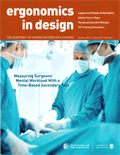
Ergonomics in Design
Elevating design standards with human-centered approaches.Ergonomics in Design is a premier journal published by SAGE PUBLICATIONS INC that focuses on the intersection of engineering and human factors, offering essential insights into the practical applications of ergonomics. With an ISSN of 1064-8046 and E-ISSN of 2169-5083, this journal aims to disseminate high-quality research and innovative design solutions that enhance user experience across various domains. Having consistently ranked in the Q2 tier for Engineering and Q3 for Human Factors and Ergonomics, as per the recent Scopus Ranks, it serves as a valuable platform for scholars and practitioners dedicated to the advancement of ergonomic principles in design. The journal encompasses a wide array of topics from product design to workplace ergonomics, facilitating a multidisciplinary dialogue that supports the improvement of safety, comfort, and performance. This commitment to bridging theory and practice has established Ergonomics in Design as a vital resource for those keen to influence the design landscape from 1993 through to 2024 and beyond.
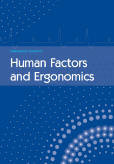
International Journal of Human Factors and Ergonomics
Fostering Knowledge for Optimal Human PerformanceWelcome to the International Journal of Human Factors and Ergonomics, a premier platform dedicated to the exploration and advancement of research in the increasingly vital fields of human factors and ergonomics. Published by INDERSCIENCE ENTERPRISES LTD, this journal serves an international audience of researchers, practitioners, and students, facilitating the dissemination of knowledge that aims to enhance the interaction between people and systems. With its ISSN 2045-7804 and E-ISSN 2045-7812, the journal actively contributes to the academic community's understanding of human capabilities and limitations, striving to improve product design, work environments, and overall usability. Despite its classification in Q4 of the 2023 Human Factors and Ergonomics category and a Scopus ranking reflecting the competitive landscape—where it stands at #37 out of 46 in its field—the journal is committed to building a strong foundation of evidence-based practices through rigorous peer-reviewed articles. Through its convergence efforts from 2016 to 2024, it aims to bridge theoretical research with practical applications to promote safety, efficiency, and user satisfaction across various domains.